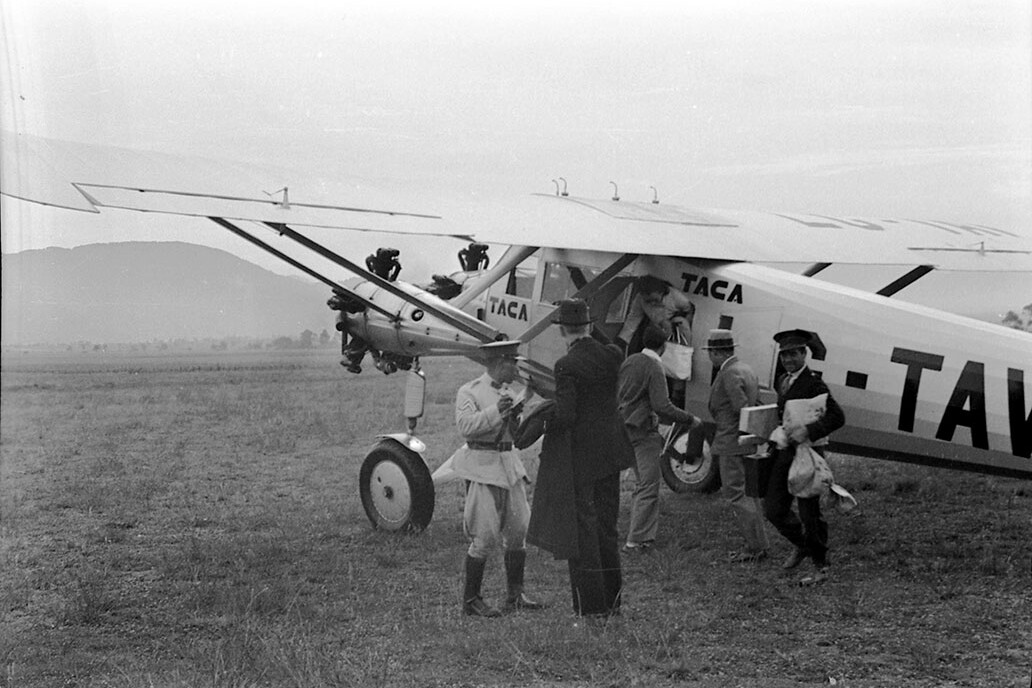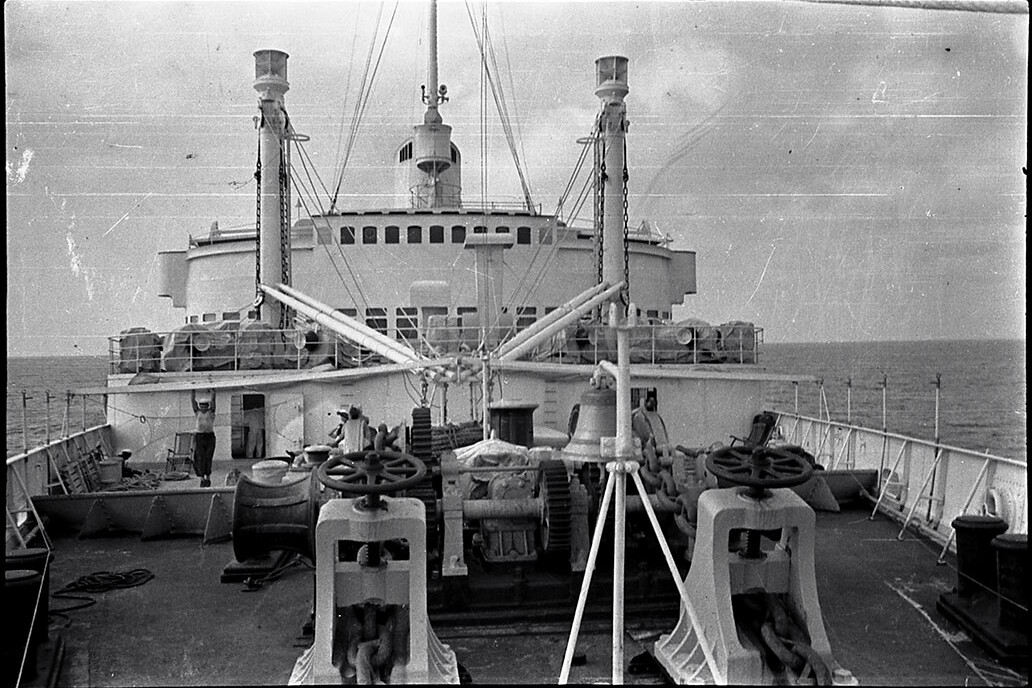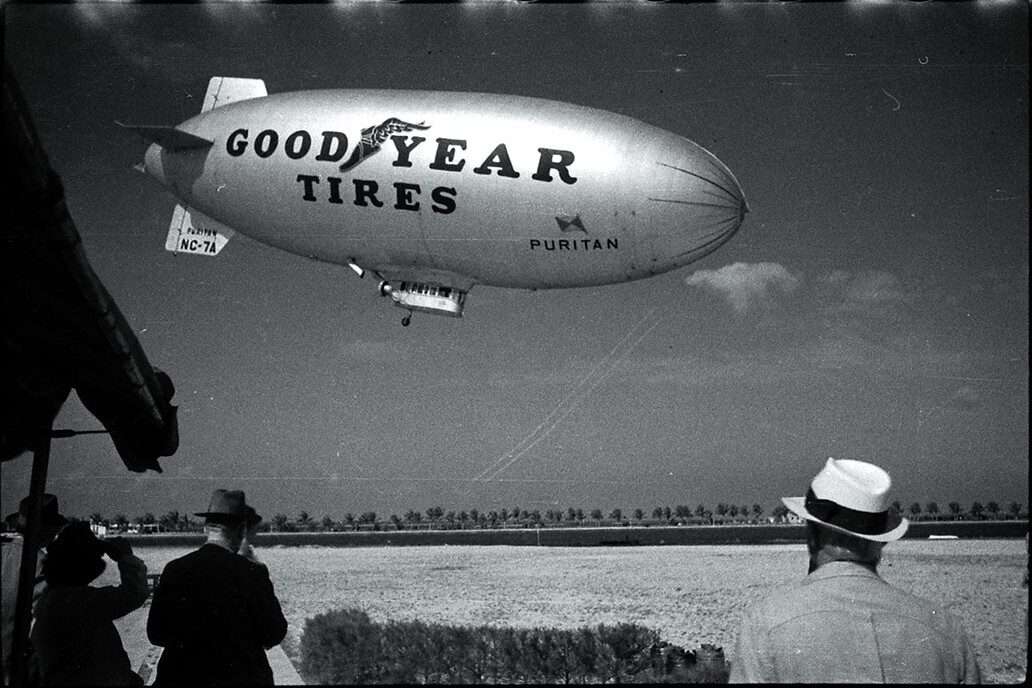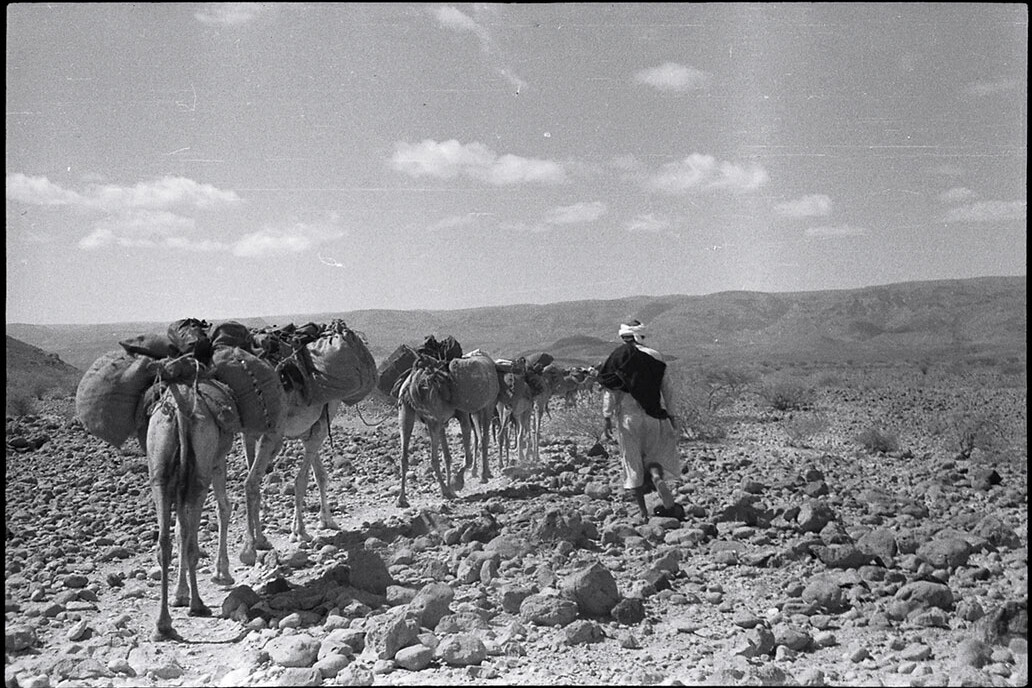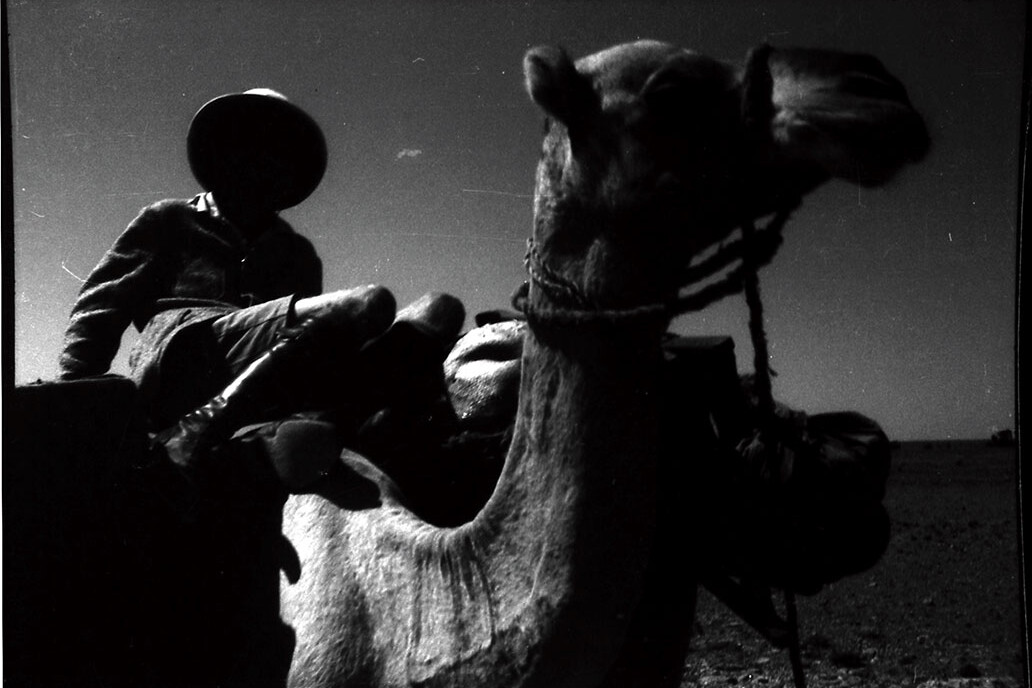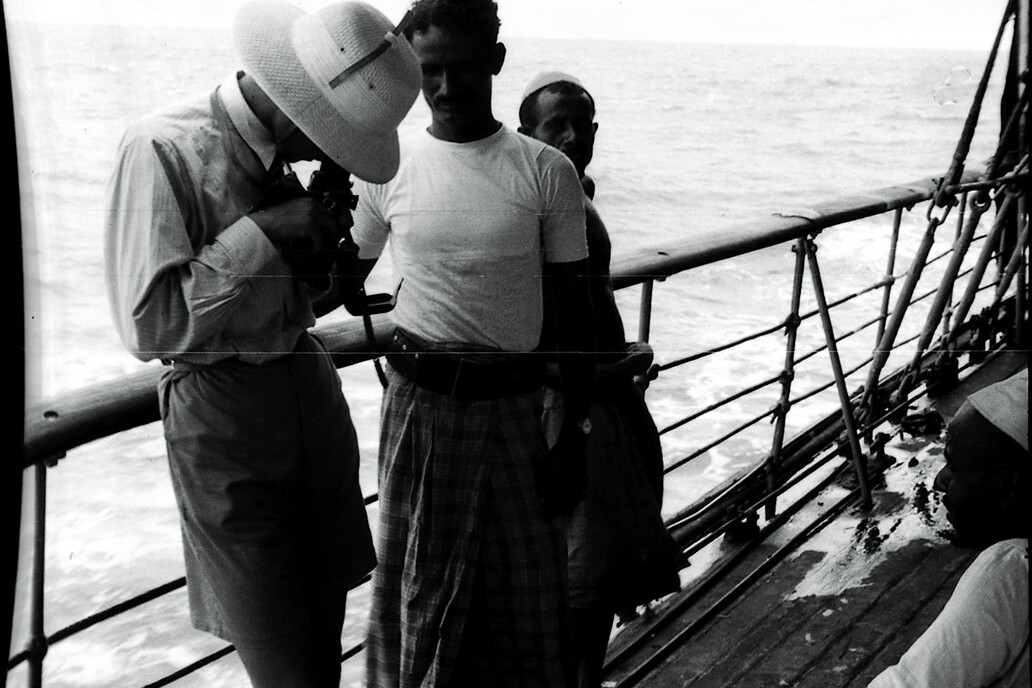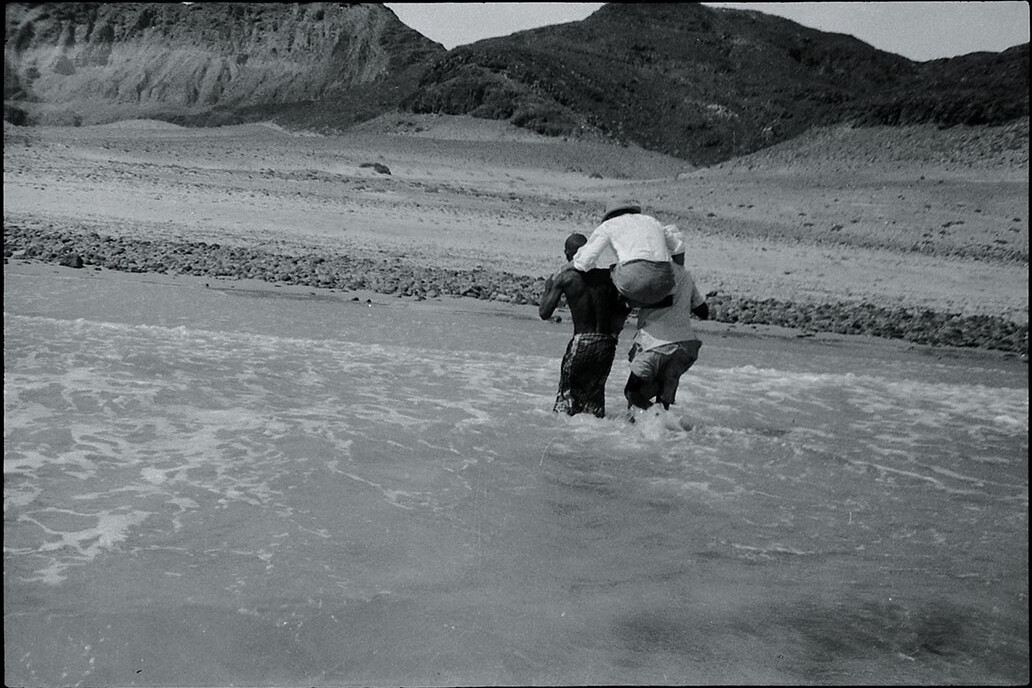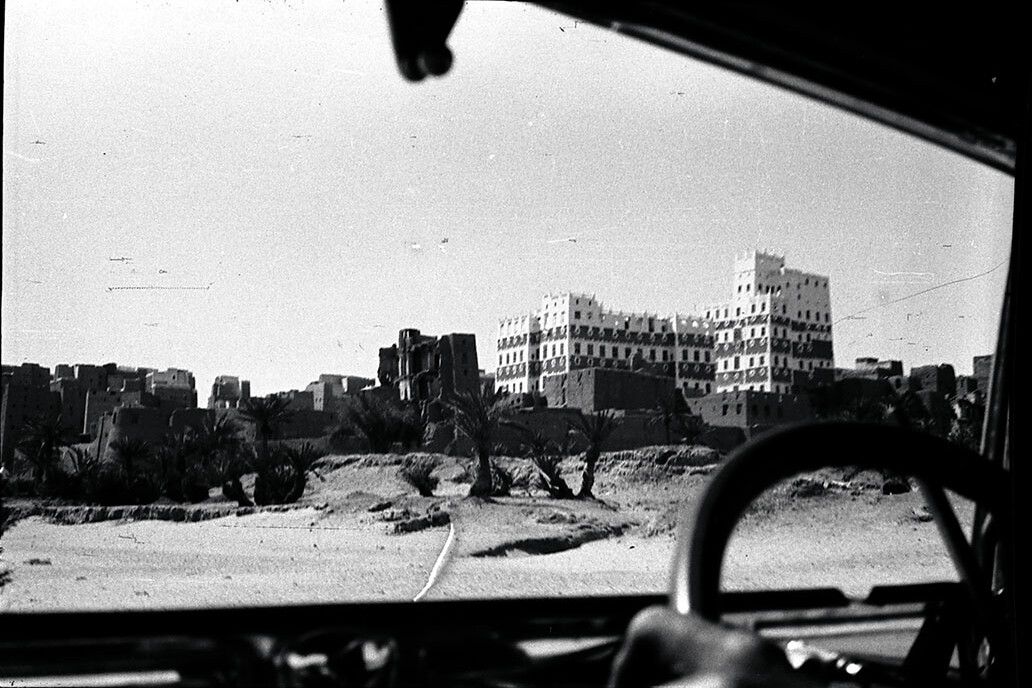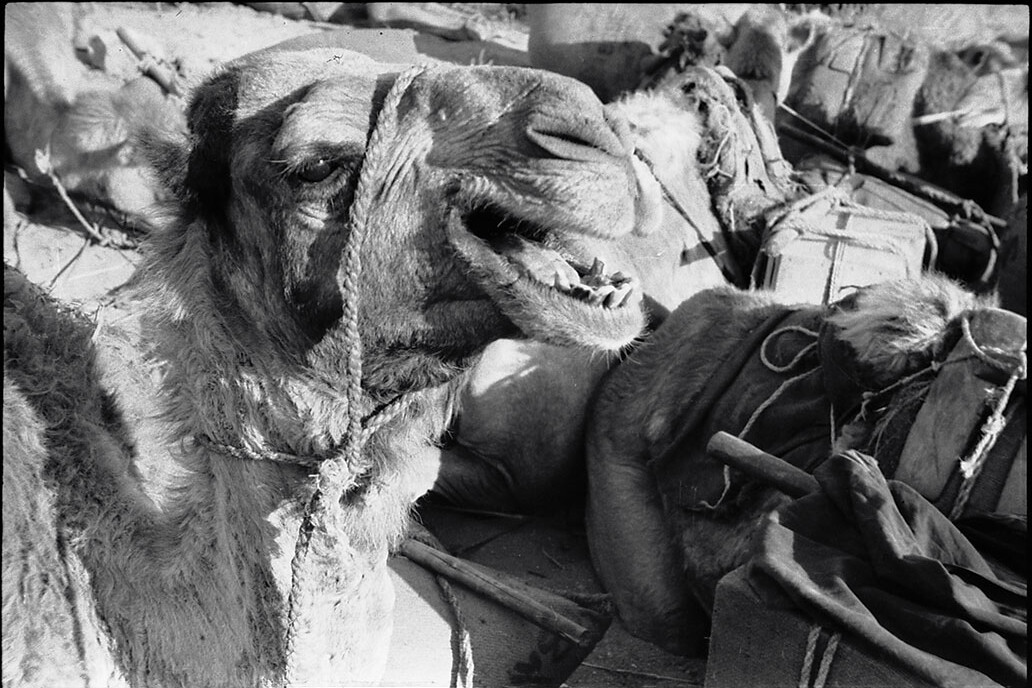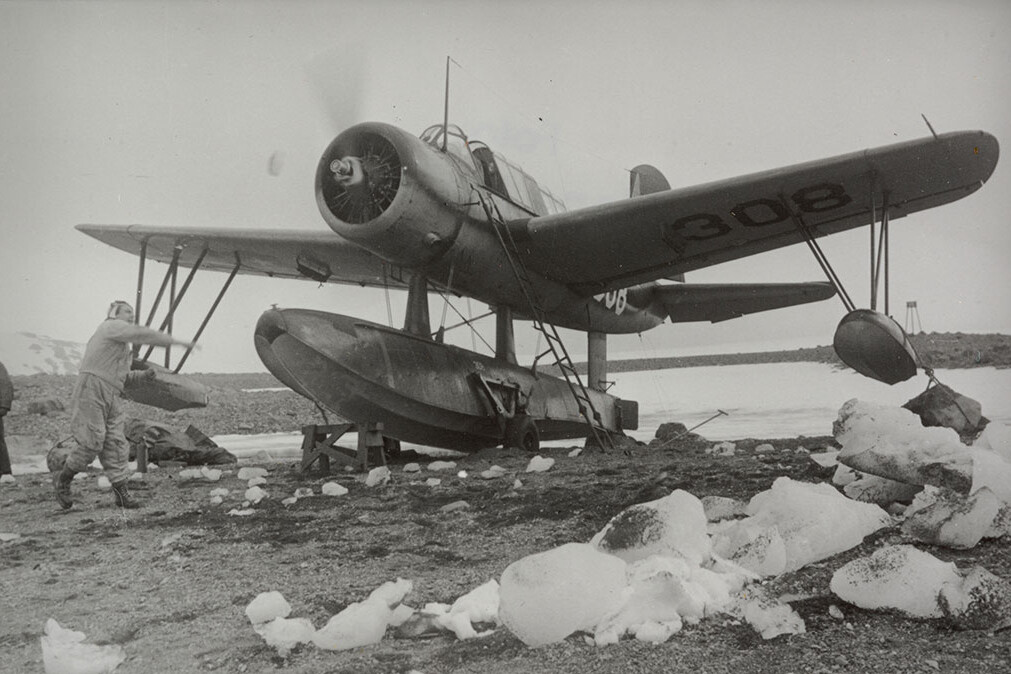Travels
After the successful journeys during his studies, Hans Helfritz traveled on expeditions and other adventures his whole life, and evaluated his reconnoissance in words and pictures.
From 1930 on he was constantly travelling. He visited the Middle East (1930), South Arabia (1931-1935), India, Malaysia, Japan and China (1935/36), Mexico, Guatemala and the USA (1937/38). He found himself in Bolivia at the outbreak of World War Two.
During and after his exile he had the opportunity to extensively travel Chile and its bordering countries, and take part in numerous scientific expeditions as photographer and cameraman. One of these expeditions was a study of malaria, another organized by the Archeological Museum in Santiago de Chile studied mummies in the north of the country, and still another that visited Tierra del Fuego and Rapa Nui (Easter Island), as well as an expedition to the Antarctic.
Even after his return from exile in 1959, Helfritz remained true to his passion for travel. He now worked as a travel guide and competently led groups through, among other places, Indonesia, Ethiopia and Mexico.
Middle East
During the semester break in 1930, Hans Helfritz traveled to Egypt, Palestine, Syria and Mesopotamia. He had been able to close his first book deal before the date of departure. Professor von Hornbostel gave him a phonogram device along with wax cylinders to take with so he could make recordings in the region. At the same time the Christian Archeological Institute in Jerusalem hired him to film excavations in Palestine. It was Hans Helfritz’s first film. This trip and the experiences he gained were formative for his further work as a research traveler, ethnomusicologist, author and cameraman.

"I had the apparatus. Now the trick would be finding the right musicians and convincing them to sing into this strange horn. And it wasn't so easy. Ghasale was a singer who was especially loved in her village.‘You fool!’ one of them shouted, ‘Don't you know that there is a spirit hidden in that thing and when you sing it will take possession of your voice so that you won't be able to make a sound!’I pleaded with her not to believe this stupid fellow and sang a few notes into the machine myself, which I could immediately play back. She liked it.Now we were rolling and the spell was broken. Everyone was thrilled as I played back the songs that had just been recorded. Now they all wanted to hear themselves and I managed to record herdsmen's chants, marriage songs, wedding singing as well as melodies on the flute, the double-clarinet and the Rabah, the Arabian violin."
South Arabia
Apart from the music ethnology assignment in South Arabia, Hans Helfritz also traveled footraces with different adventurers, including Freya Stark and St. John Bridger Philby, who was the first to reach the legendary city of Shabwa with its Sabean ruins from biblical times. The Bedouin who lived there at the time believed that the buried treasures of the Queen of Sheba were under the ruins and refused strangers entrance. After this first failed attempt, he was able to succeed in this dangerous mission in 1935.
Hans Helfritz was the first European to enter Sheba. Despite the danger of being shot if he was discovered, he recorded a film and took photographs. This journey brought him international acclaim and invitations to lecture from the Royal Ancient Society (1936) in London and from the National Geographic Society (1937) in Washington D.C., where he also showed the film.

"My journeys to South Arabia were later very important for my whole life. They are some of the experiences that also helped determine the course of my life. Professor von Hornbostel had said to me, ‘Try at least once to get to South Arabia.’ At that time, traveling to South Arabia was an almost hopeless task. It was the most difficult land to visit. I now tried to somehow make a connection with the country.To this end, I visited Dr. Prüfer in Berlin. ‘What on earth should I do now?’‘You just wait and see.’ Later he called me and said, ‘Come again in one month, at that time you will receive a letter of introduction from me, with which you will immediately go to the Hotel Adlon and give to the Sultan of Makalla. You simply ask this Sultan ... simply say to him, ‘Good day, I have heard so much about your country, that it is such a beautiful place, would it not be possible for me to call upon you?’’The Sultan listened to me, had his interpreter near by, and said, ‘Why is it you actually want to travel to my country?’‘I am particularly interested in the music. I have heard that you have such beautiful music.’‘So’, he said, ‘You are interested in music. Well that is quite interesting. In a month I will be in Aden again. If you are also in Aden, then I will take you with me to Hadramaut. You will be my guest in Makalla.’And that I did. There were grand festivities, as this was the first journey abroad that an Arab Sultan had ever made and that had to be celebrated. And at these celebrations I then became acquainted with the monarchs from the interior of the land, who then, for their parts, extended invitations to me, and this is how I got to South Arabia."
Far East (1935/36)
Hans Helfritz financed all of his journeys with royalties from his books and lectures and, by mentioning the shipping lines and airlines in his films and articles, was able to travel free-of-charge in return.
In 1935, at the end of his expedition to Yemen, he continued travelling east and so became acquainted with the old trade routes of the Yemeni, which stretch all the way to Indonesia. He visited India, Sri Lanka, and the Cameron Highlands in Malaysia, where he encountered the natives of the Sakai tribe, who he photographed. After also visiting Japan and China, he returned to Germany from Shanghai on the new ship Scharnhorst and published his experiences and photos in two books (Im Urwald von Malaya – In the Jungles of Malaysia, Ewigkeit und Wandel im Fernen Osten – Eternity and Change in the Far East, both 1936).
Mexico and Guatemala (1937/38)
After his stay in the USA, Hans Helfritz traveled for two months through Guatemala and Mexico where he was to develop further films for Ufa. Among other things, he managed to get the first recordings of the Voladores dance in Mexico.
In the highlands of Guatemala, he first encountered the culture and music of the native peoples there, which he filmed and photographed and which fascinated him until the end of his life.
USA (1937/38)
After his book about Yemen was published in North America (Land Without Shades, 1936), Hans Helfritz received an offer to conduct a lecture tour through the USA. The most important lecture took place in 1937 before the National Geographic Society in Washington D.C., where he also showed his film. Additionally he used the journey to shoot new documentary films for the Ufa in California and Florida.
He again made it to North America in 1938 to hold further lectures, after which he continued his journey to Central America.
Tierra del Fuego
In 1945, Hans Helfritz took part in an expedition to Tierra del Fuego. The expedition, sponsored by the Smithsonian Institute in Washington under the direction of Professor Alejandro von Lipschütz, planned to document the last living native peoples living there. Helfritz’s role was that of photographer.
Antarctica
In order to be able to lay claim to Antarctic territory, Chile put together an expedition in 1947 with the intention of establishing a station there. Hans Helfritz took part as cameraman. Deeply impressed by the majesty of the scenery, icebergs and animal world, Hans Helfritz wrote a book about the Antarctic (Zum weißen Kontinent – To the White Continent, 1947).

"Literally 'at the last minute' people realized that native peoples still lived in Tierra del Fuego, and so the Chilean government mounted an expedition in 1946. The goal was to find out what sort of cultural transformations had occurred 'down there' in the mean time and how many native Indians had survived in Tierra del Fuego. The natives in Tierra del Fuego fell into three groups or tribes, the Ona, Yamana and Alakaluf.Now we had collected information about the last Indians, who themselves also knew that their time was up. The Chileans had provided the island Navarino at the Yamana's disposal, where they could spend their last days. And there we found some who still lived in toldos, tents. The chieftain of the Yamana lived in a corrugated steel shack.Later I found out that there are actually no more Yamana and not one Ona left in Tierra del Fuego."
Africa
After the war, connections to German publishing houses were restored and Hans Helfritz could again put together travel plans. Safari Publishing ordered a book about countries on the west coast of Africa. In Liberia, Nigeria and Guinea, new and foreign environments, Helfritz was again able to deliver impressive series of photographs. He traveled again to Western Africa in 1961, this time on behalf of the composer Nikolas Nabokov, to find musicians and dancers for a planned UNESCO festival in Brazil, which never took place due to lack of funds.
In the sixties Hans Helfritz led travel groups to Ethiopia and wrote an cultural travel guide about the country.


